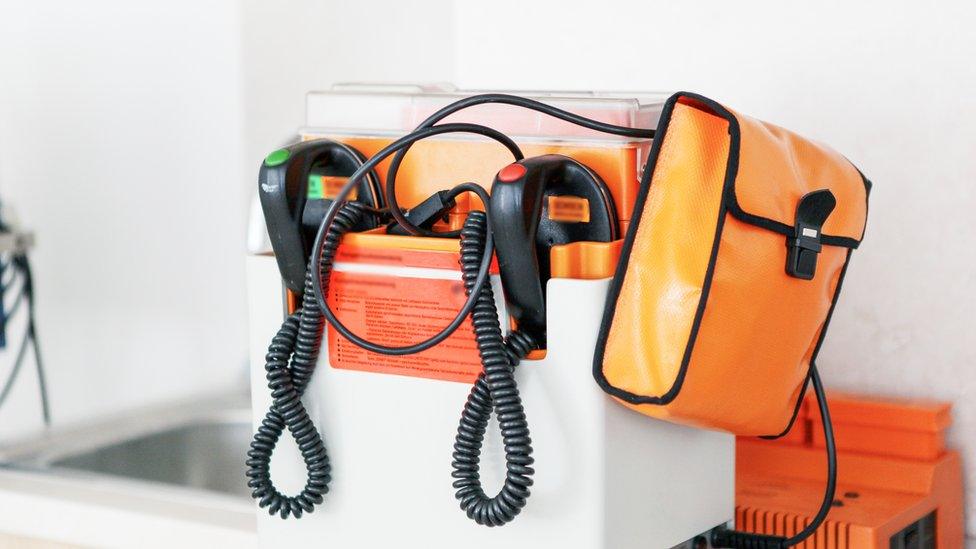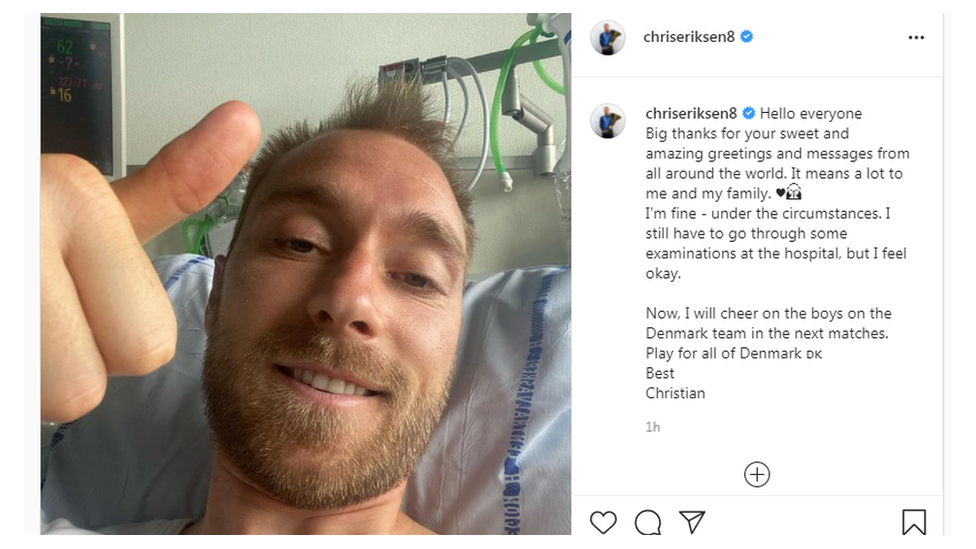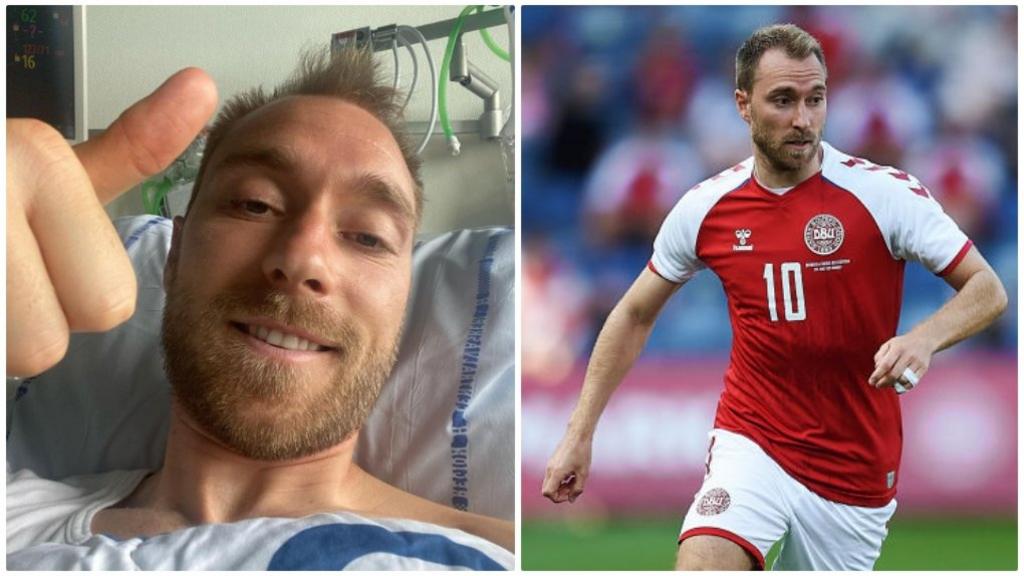Christian Eriksen: How did CPR and a defibrillator save his life?
- Published
- comments

Danish footballer Christian Eriksen became ill just before half-time
Footballer Christian Eriksen collapsed in Denmark's opening Euro 2020 game against Finland last weekend.
He was given life-saving treatment on the pitch and was taken to hospital where he's now recovering.
Eriksen says he is "fine under the circumstances" and is getting a device called an ICD fitted to help his heart in the future.
But the treatment Eriksen received on the pitch - called CPR and a machine called a defibrillator - almost certainly saved his life.
In Denmark's next match against Belgium both teams stopped play to make a tribute to Eriksen and the medical staff who helped him.
Read our guide to find out more about the special treatment that helped save him.
What is CPR?

People do courses like this to learn how to do CPR
CPR stands for 'cardiopulmonary resuscitation' and is given to someone who is in cardiac arrest.
A cardiac arrest is when the heart suddenly stops pumping blood around the body.
When the heart stops pumping blood, it means the brain stops getting oxygen. This causes someone to fall unconscious and stop breathing.
Cardio - This refers to the heart, who's function is to pump blood that is rich in oxygen from the lungs to the rest of the body. When the heart stops, oxygen can't reach the rest of the body.
Pulmonary - This refers to the lungs. Every time you take a breath, your lungs fill with oxygen which all our organs need to function.
Resuscitation - This means restoring life to something. So CPR is way of keeping the heart and lungs working until further help arrives.
CPR is a life saving technique that helps to pump blood around a person's body when their heart can't. It is only given if someone is unconscious and not breathing or not breathing normally.
To carry out CPR a trained person will press up and down on a person's chest.
In the past, CPR would also be given with a series of rescue breaths. However, current guidance advises not giving rescue breaths due to the risk of coronavirus.
Sudden cardiac arrest - like what happened to Christian Eriksen - is very rare in children.
It's very rare for anyone to become seriously ill while playing sport.
Lots of people saw what happened to Eriksen on live television and it's not unusual to be upset by what happened. It's also normal to feel fine too. But if you are confused or worried about anything you've seen or heard then you can find advice on the link below.
It can also be good to speak about how you're feeling with adults that you trust.
What is a defibrillator?

Defibrillators are used to help people who are in cardiac arrest
When a person has a cardiac arrest a defibrillator can be used to shock the heart back into a normal rhythm.
A defibrillator is a small device that is simple and safe to use. It has two pads that attach to the person who needs it and will give clear instructions on what to do.
The British Heart Foundation describes a defibrillator as "a device that gives a high energy electric shock to the heart of someone who is in cardiac arrest.
"This high energy shock is called defibrillation, and it's an essential part in trying to save the life of someone who's in cardiac arrest."
It will not give a shock unless it's appropriate.
Fabrice Muamba tells Newsround more defibrillators are needed
Defibrillators are available to the public in busy locations like shopping centres, sports stadiums and train stations across the UK.
These defibrillators are known as public access defibrillators (PADs) as anyone can use them.
Christian Eriksen received one shock from a defibrillator that helped save him.
What is an ICD?

Christian Eriksen thanks fans for support and messages
Christian Eriksen will be fitted with a heart-starting device called an ICD.
It stands for 'implantable cardioverter defibrillator' and is "necessary due to rhythm disturbances" in Eriksen's heart, according to Danish team doctor Morten Boesen.
An ICD is a small device which is placed under the skin, it is connected to the heart with thin wire and sends electrical pulses to regulate abnormal heart rhythms.
- Published15 June 2021

- Published13 June 2021

